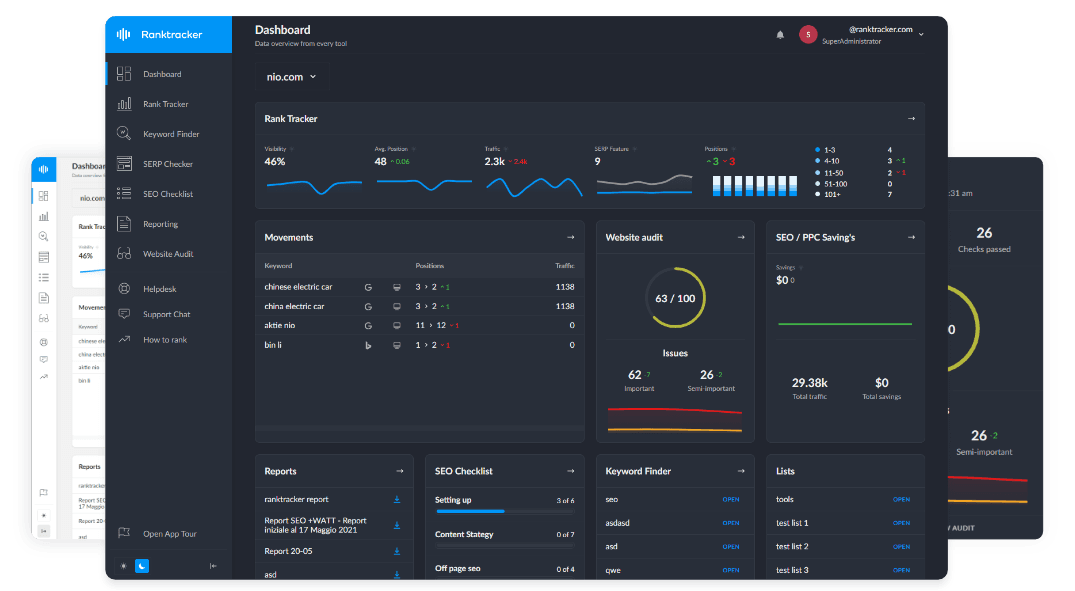Intro
In 2015, in order to stay ahead of the competition, it takes more than basic on-site optimization. With new penalties creeping up almost every month, it;s becoming more and more important to clean up your existing backlinks, to get rid of the bad eggs which could end up biting you in the back side further down the road.
We have all made the mistake of hiring a shady SEO company at some point in time, and without proper knowledge of SEO, it can be difficult knowing what makes a good link, and what makes a bad one. It’s not hard to find a bunch of horror stories of people who have hired an unprofessional SEO agency who promise first page rankings, only to have their website fired into the dark side of the search engines.
While ‘bad backlinks’ can and will work at first, it’s almost a guarantee that they will backfire at some point, and will spiral you further down the rankings than if you never built a link in the first place. Not only is this a waste of money, it’s also extremely difficult to recover from, as Google know that your website may not have the quality of content that is good enough to achieve real, quality backlinks.
How Do I Find Bad Backlinks?
Telling the difference between a good and a bad backlink is actually quite simple. It all comes down to the quality of the website in which your link is found on. Sometimes is blatantly obvious, and sometimes it takes a little bit more research, but in every case, the links will fall into a couple of categories.
Is The Website Built Exclusively To Build Links?
These are generally pretty easy to spot. If the website has a bunch of useless articles that have no relevance to each other, and it’s apparent that they are only their to provide an anchor for a link, then it’s a sure sign that it’s been set up just to build links.
The majority of the time, these websites are built with Wordpress, and they will make use of a default theme such as TwentyEleven.
Does The Link Come From A Comment?
Spam Bots have been around since the start of the internet, and they don’t seem to be going anywhere soon. As a matter of fact, these spam bots are becoming more and more intelligent by the day, with the ability to leave completely customizable blog comments which seem to be genuine at face value. However, don’t be fooled by the real appearance of these links. They are simply spam links, and provide no value to your website whatsoever.
How Optimized Is The Anchor Text?
The general assumption is that the majority of ones backlinks will use the anchor text of the website name, or in some instances, the exact URL. If the majority of your links are coming from websites which use an exact keyword as the anchor text, then it’s a usually a sure fire way of telling you that these links are shady.
If Google see that the majority of your anchor texts are an exact keyword, you can bet your bottom dollar that they don’t take your website too seriously, and a complete de-index of your website from their search results is not uncommon.
Does The Content Make Sense?
Websites which are built for the sole purpose of providing a link, are usually full of automatically generated, and spun content. This is easy to spot, and should ring alarm bells instantly. Not only do these websites use spun content, they will also completely plagiarise another websites content, instead of writing a unique piece which provides value. If the shady SEO provider wants to look a little more legitimate, they will often create websites which are related to the industry your website is in, in order to give the impression of a natural link. Don’t be fooled!
These websites will be hit by Google eventually, no matter how real, or how related they are. The Google Panda update was released specifically to target low quality content, so it’s just a matter of time.
Are The Links From Your Native Country?
Real links will more than likely come from the country in which your business or website is based. Links from Russian or Dutch websites for a company website based in New York City just doesn’t fly.
How To Get Rid Of Bad Backlinks
Now that you have a basic understanding of what makes a link a bad one, you need to know how to get rid of them. Fake, unnatural backlinks will definitely hurt your rankings at some point, so getting rid of them early on is crucial. Here are a few methods for disabling, and getting rid of these fake backlinks:
- Ask the website owner to remove the link! Who would have thought? This one is easy, and should be your first option. Simply search the website for contact details of the owner, and send them an email asking them to remove the unwanted backlink. Remember to be polite! The majority will have no problem with this, and will remove your link. Some will ask for a payment (Never pay!), and some will never reply at all. If that’s the case, then move on to another tactic.
- Disavow your links. If you are overridden with bad backlinks, and removing them individually will take too much time and effort, then simply disavow all of the bad links. What does this mean? You are basically telling Google to ignore them, and not take them into consideration when crawling your website.
- Simply get rid of your domain, and start over. It’s not something a web master wants to hear, but sometimes it’s the most cost efficient way to eradicate your bad backlink profile. However, this should only be considered if Google has already penalized your website, and you see no way of fighting back.
- If getting rid of your entire website isn��’t an option for you, then checking which pages are the biggest victims to poor SEO, and removing just those pages can work wonders. The easiest option is to 404 the page, but too many 404’s can actually hurt your websites reputation too, and Google don’t take too kindly to too many 404’s. However, if it’s just a couple of pages which the bad backlinks are pointing to, then this could be a viable option.
All of these methods of removing bad backlinks will work eventually, but it is worth remembering that you WILL lose traffic because of this. The loss of links will more than likely affect your positioning on the search engines, ultimately leading to fewer visitors. Is it worth it? Of course it is. It’s a short term loss, but with some proper backlinks on real, quality websites, you can get your website back to full force in no time.
The All-in-One Platform for Effective SEO
Behind every successful business is a strong SEO campaign. But with countless optimization tools and techniques out there to choose from, it can be hard to know where to start. Well, fear no more, cause I've got just the thing to help. Presenting the Ranktracker all-in-one platform for effective SEO
We have finally opened registration to Ranktracker absolutely free!
Create a free accountOr Sign in using your credentials
Sure, this isn’t an overnight fix, and there is a lot of work involved, but if you value your website, and you don’t want to give up without a fight, then unfortunately, there are no other options!

